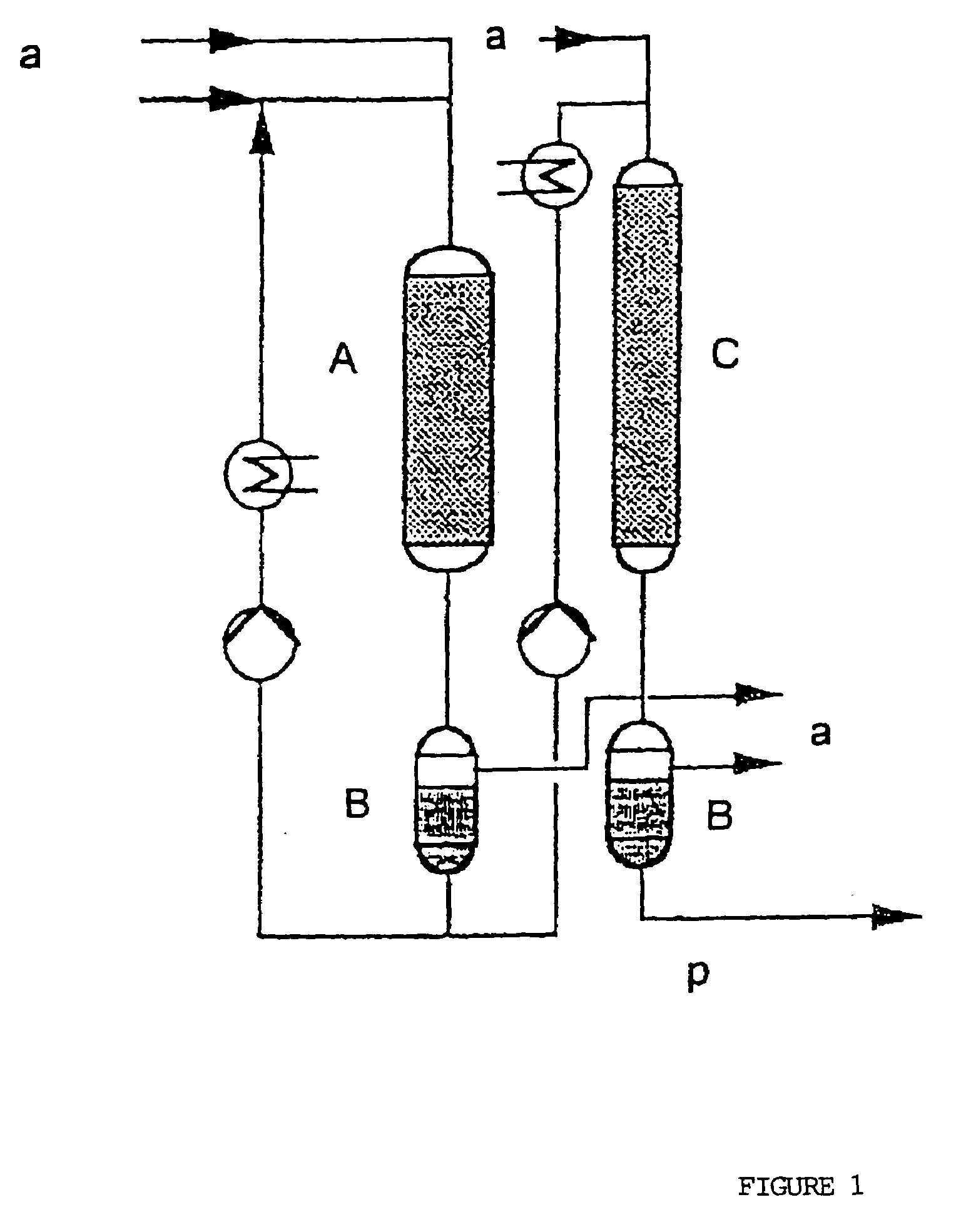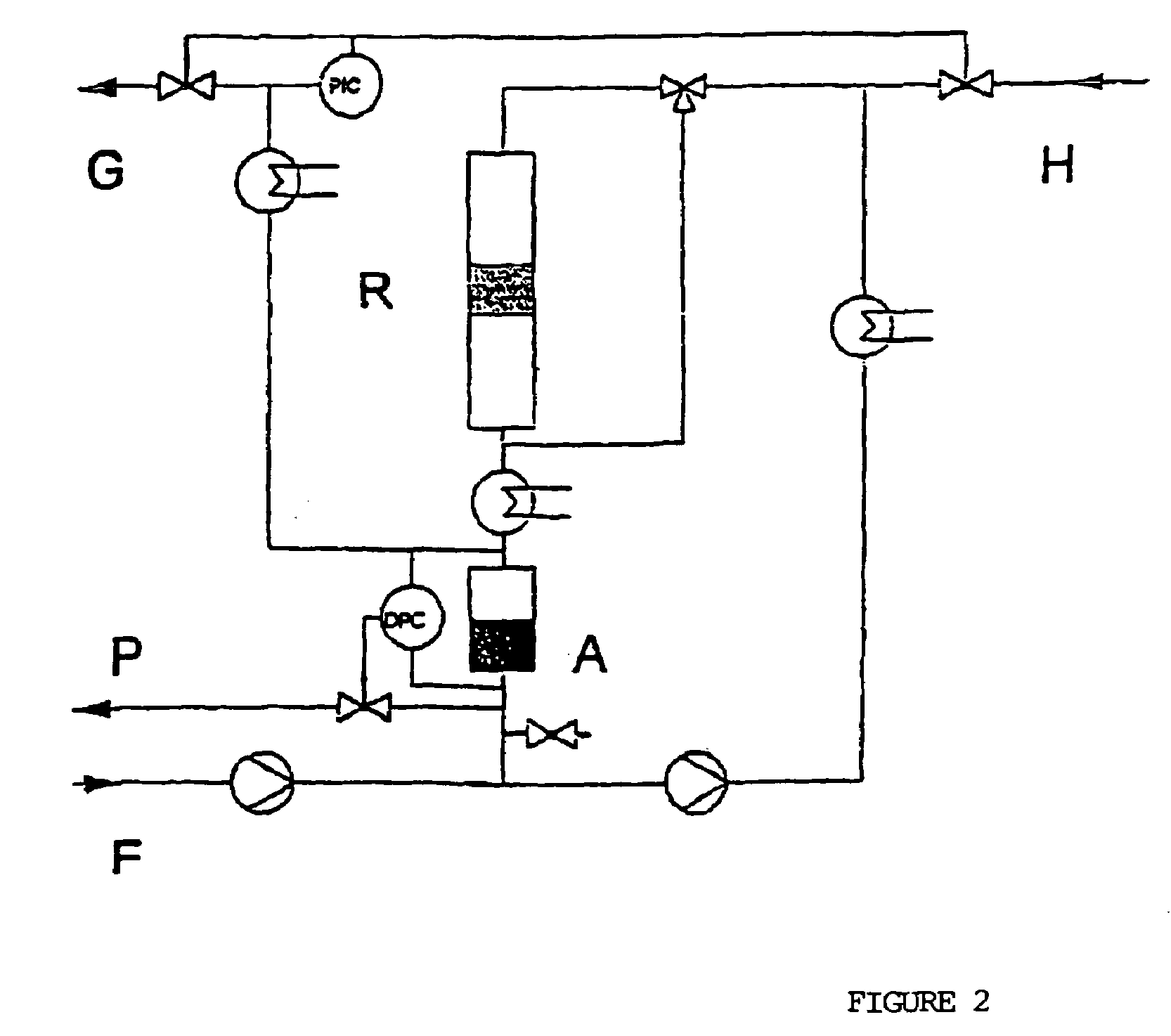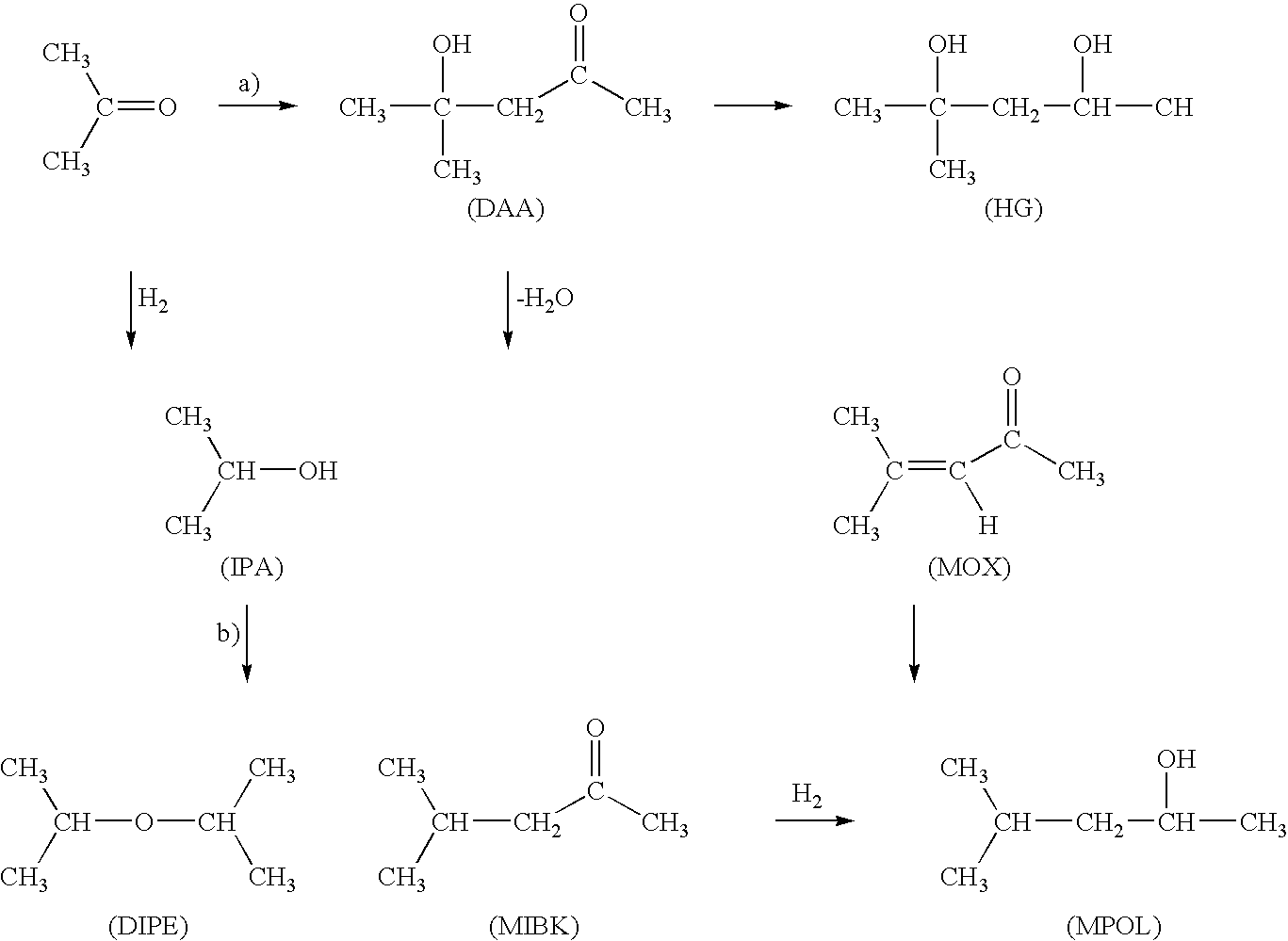Process for the hydrogenation of acetone
a hydrogenation process and acetone technology, applied in the field of hydrogenation process of acetone, can solve the problems of preventing its use in the cosmetic or pharmaceutical industry, high cost of isopropanol after the reaction step a), and achieve the effect of efficient hydrogenation of aceton
- Summary
- Abstract
- Description
- Claims
- Application Information
AI Technical Summary
Benefits of technology
Problems solved by technology
Method used
Image
Examples
example
[0045]An experimental plant as shown in FIG. 2 was set-up.
[0046]In batchwise experiments, starting material F is allowed to flow into separation vessel A and is pumped around the circuit of the scheme and in the process by-passes reactor R. The apparatus including the reactor is subsequently brought to the desired reaction conditions. At the commencement of the reaction, appropriated switches are turned so as to permit the flow of material in the circuit to flow the reactor R. After about 5 minutes, constant temperature and pressure have become established and the first product samples are taken. Hydrogen is introduced into the reactor and is discharged from the system via lines H and G, respectively. Using different suitable catalyst weights in the reactor, the pump circulation of material yields product at different conversions on a single pass through the catalyst bed of the reactor. Furthermore, isothermal operation is guaranteed, which simplifies the kinetic evaluation of the e...
PUM
| Property | Measurement | Unit |
|---|---|---|
| pressure | aaaaa | aaaaa |
| temperature | aaaaa | aaaaa |
| pressure | aaaaa | aaaaa |
Abstract
Description
Claims
Application Information
 Login to View More
Login to View More - R&D
- Intellectual Property
- Life Sciences
- Materials
- Tech Scout
- Unparalleled Data Quality
- Higher Quality Content
- 60% Fewer Hallucinations
Browse by: Latest US Patents, China's latest patents, Technical Efficacy Thesaurus, Application Domain, Technology Topic, Popular Technical Reports.
© 2025 PatSnap. All rights reserved.Legal|Privacy policy|Modern Slavery Act Transparency Statement|Sitemap|About US| Contact US: help@patsnap.com



